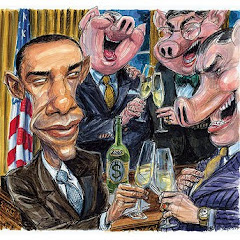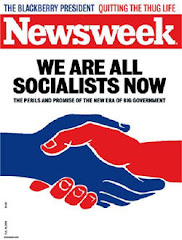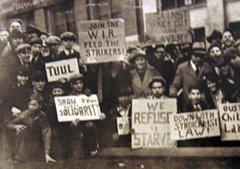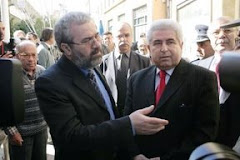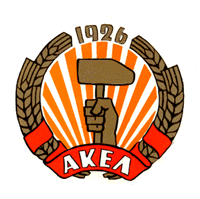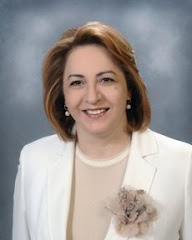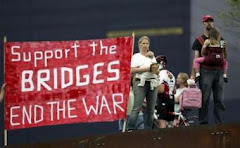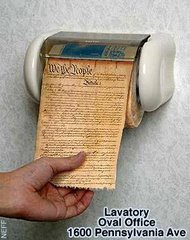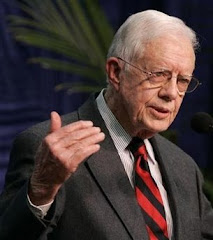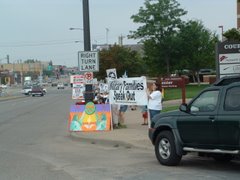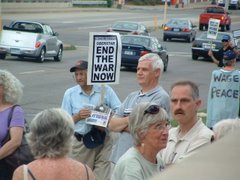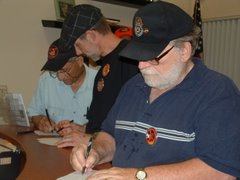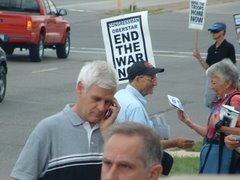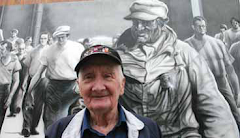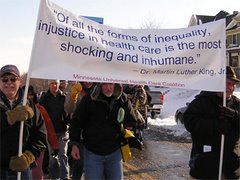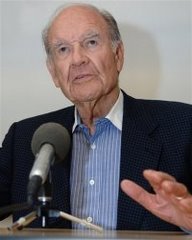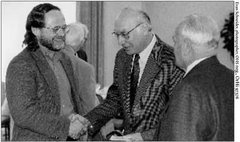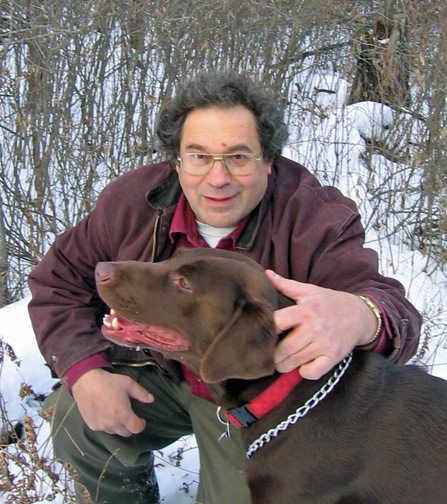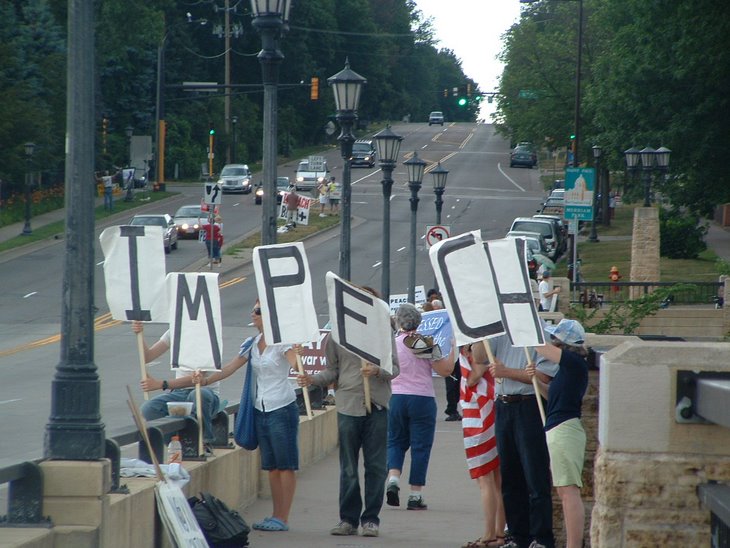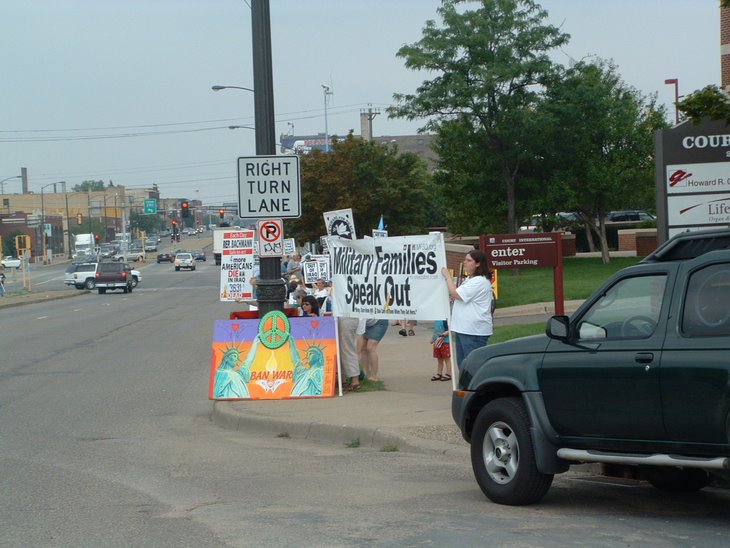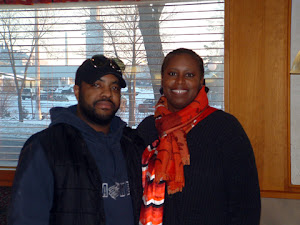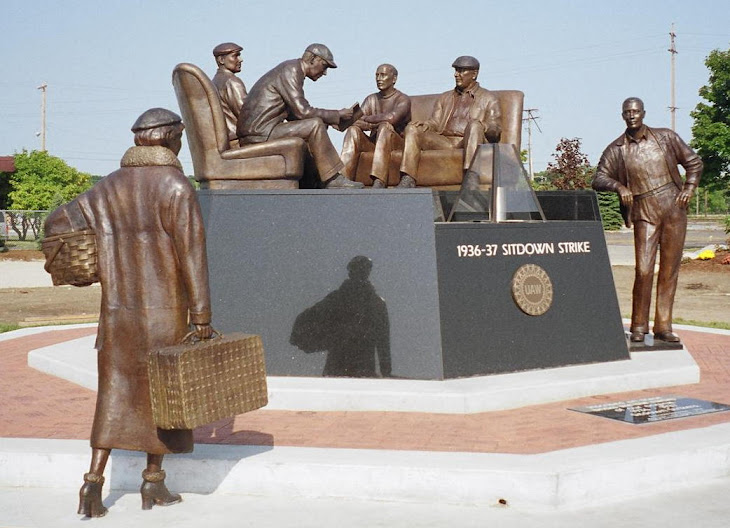This is one heck of an article about Frank Sinatra. It shows just what kind of corrupt and rotten government we have and how in a country which boasts to the world about personal freedoms just how far a government will go to harass and intimidate its citizens who speak up for what is right and just.
Frank Sinatra and the Popular Front:
Frank Sinatra and the Popular Front:The Leftism of an American Icon
By Gerald Meyer, Ph.D.
An earlier version of this essay was published in Science & Society (Fall 2002)
Introduction
Francis Albert Sinatra was "one of the most chronicled celebrities of modern times . . . the focus of oceans of ink and miles of film and video footage" (Kuntz, 2000, xi, 40). Indeed, Sinatra may be the most documented entertainer in history.
Aside from innumerable biographies, articles, and documentaries, he has been the subject of a scholarly conference and an encyclopedia. Despite this obsession to detail the ebb and flow of the life of "The Voice from Hoboken," relatively little attention has been paid to his brief, yet intense, involvement with the political Left, which among other things, caused the United States government to deny him security clearance to perform before the troops in Korea and led to an extensive inquiry to determine whether he should have been indicted for perjury because on his passport application he averred that he had never been a member of a subversive group (FBI Files 62-83219-28 and 36, 211-232, 244).
From 1944 until 1948, Sinatra contributed financially and lent his name to progressive causes and organizations; but he did what few progressive celebrities did in that period: He publicly—in a sense, physically—confronted racism, prejudice, and red baiting. ("Progressive" here is defined as those who, although not Communists or even Communist sympathizers, were comfortable working together with Communists toward common goals. ) Sinatra's connections with the Left abruptly ended when he became the target of red baiting which contributed to an astounding downward spiral in his career.
A vital part of Sinatra's early Leftism—the activities, associations, and avowed beliefs—grew out of his early experiences: in ways large and small, they reverberated throughout his life. Sinatra's "left phase" not only sheds light on the trajectory of this American icon, but also speaks loudly to two large and related phenomena: the Popular Front (in both its political and cultural manifestations) and the Popular Front's repression in the postwar period. The Popular Front was a political strategy first enunciated by Georgi Dimitroff in 1935, when, as the leader of the Comintern, he called for a political alliance of all anti-Fascists for the purpose of stemming the advance of fascism.
The failure of the Popular Front to achieve this alliance on the level of nation states, that is, to coalesce the Soviet Union with the Western democracies, caused the Soviet Union, on August 23, 1939, to sign a Non-Aggression Pact with Germany. The invasion of the Soviet Union by the Axis powers, in a very real sense, materialized the Popular Front. In the post-war period, the goal of the Communist movement, and much larger numbers of non-Communists, was to perpetuate the Popular Front. The Popular Front was confronted by the foreign and domestic policies of the Truman administration, which inaugurated the Cold War abroad and the political repression of the Left at home. Sinatra's story shows how widespread Popular Front politics were in the United States, and it reveals how relentless and vicious the repression was that ultimately obliterated this movement.
Although only one of its eight chapters, "Sinatra and Communism," addresses the issue of Sinatra's involvement with the Left, The Sinatra Files: The Secret FBI Dossier, edited by Tom Kuntz and Phil Kuntz, has added to the public record this component of Sinatra's story. The 1,275-page dossier that the Bureau first opened on him in 1943 was the product of a forty-year surveillance on the single most famous and influential vocalist of American popular music. The largest part of Sinatra's FBI file is comprised of reports linking him to "the mob"; however, nearly 25 percent of the files are devoted to Sinatra's involvement with the Left.
The Sinatra Files contains entries that help to reconstruct this slighted period in the life of the singer who raised American popular music to an entirely new level. However, by failing to independently assess these sources and by publishing unevaluated and undigested material that was stuffed into Sinatra's FBI file, the editors of The Sinatra Files, albeit unintentionally, further disseminate hearsay evidence, which was collected and used for the purpose of isolating and disabling an individual who advocated a progressive political agenda. In this paper, we will incorporate relevant sections of Sinatra's FBI file and place them into a context that gives them meaning.
Family/Community Influences
Sinatra's early life predisposed him to the Left. His parents were both immigrants from Italy—his mother, Natalia (Dolly) Garaventa, from a village near Genoa; his father, Anthony Martin Sinatra from Sicily—who settled in Hoboken, New Jersey (Fagiani, 1999, 20, 23). Located directly across the Hudson River from midtown New York City, this mile-square waterfront city had a well-earned reputation as a tough, working-class town. By the 1930s, Hoboken was the most densely populated city in the United States. This gritty city's sixty-thousand residents formed ethnic sub-communities, where by this time Italian Americans had supplanted the German- and Irish-Americans as the largest ethnic group (Federal Writers' Project, 1989, 262-269).
In a full-page interview with the Communist poet Walter Lowenfels in The Daily Worker, Sinatra recalled, "I was brought up in a tenement in a very poor neighborhood. It was a real melting-pot, a cross-section of every racial group in the country" (Lowenfels, 1945, 3). Sinatra was referring to Hoboken's south-west corner (the only area of the city where wooden tenements predominated), an Italian urban village with its own Italian "national parish," St. Francis, that sponsored an annual festa and mass was conducted in Italian (Proctor, 91-94; Brown, passim).
Sinatra's parents were integrally involved in the social fabric of that community. Anthony Martin Sinatra had fought as a prizefighter before being injured and then worked in Hoboken's shipyards. Dolly Sinatra, who served as the Democratic Party leader for Hoboken's Third Ward, played the political godmother of the neighborhood; she accumulated eighty-seven godchildren. During the Great Depression, her ability to deliver six-hundred votes at election time resulted in her securing for her husband a big Depression-era prize—a job in Hoboken's Fire Department (Talese, 113-115).
In an interview with Walter Lowenfels, a critically acclaimed Communist poet published in the Sunday Worker, Sinatra related his left commitments and activities to his mother's political activities. He explained: "My mother is what you would call a progressive. She decided she didn't want to be just a housekeeper and studied nursing and is now a graduate nurse. She was always interested in conditions outside her own home. My father, too, but he was the more silent type" (Lowenfels, 1945). Dolly's politics were not directly associated with the Left. She served as a loyal liege in the Hoboken fief of Frank ["I am the law"] Hague's political duchy of Hudson County, New Jersey, a densely populated, largely working class, immigrant area divided into twelve townships. In its determination to elect Franklin Delano Roosevelt to a fourth term, in 1944, the Communist Party, despite Hague's notoriety for corrupt, imperious governance, actually endorsed Hague's for re-election as Mayor of Jersey City, a small city and county seat adjacent to Hoboken. This was conceivable because for all of its corruption, this old-fashioned machine practiced a populist politics that made blatant class appeals; its carefully ethnically balanced tickets acknowledged the predominant nationalities residing in these communities. More to the point, the Hague machine's enthusiasm for or indifference to the Democratic Party's candidates for statewide and national office was a critical ingredient in the electoral outcomes in this closely contested swing state. So important were the Democratic pluralities to winning its electoral votes for Roosevelt that the Communist Party invited Hague into the "progressive" coalition (Norman, 1943). Nonetheless, Sinatra stepped out on his own when he openly affiliated with obviously left groups and initiatives—something that was not customary in Hudson County's political culture.
Sinatra and the Popular Front
Sinatra's involvement with the Left coincided with the extension of the Popular Front into the wartime—which in the United States was its zenith of influence—and the advent of its repression. The Popular Front incorporated a strategy which embodied both a politics and a culture, whose raison d'etre was the defeat of Fascism. Largely because of the refusal of the Western powers to accept the Soviet Union as an ally, the Popular Front had failed to prevent the rise of Fascism. Nonetheless, this political movement gained enormous support and prestige because of the wartime military alliance between the United States and the Soviet Union and the role of the American Left in fighting racism and anti-Semitism as well as fascism abroad. In the United States, the Popular Front was perhaps best enunciated in Vice President Henry Wallace's 1942 speech where he asserted that the world was entering "The Century of the Common Man," a new era where the danger was racism and the solution internationalism (Culver, 2000, 275-280). This politics flourished in the left-New Deal coalition which intermingled Communists and much larger groups of left-leaning progressives. Politically, the Popular Front was epitomized by the Cogress of Industrial Organizations (CIO) unions and especially by its formation of its affiliated Political Action Committee in 1944. Other key components included the American Labor Party in New York, scores of fraternal and cultural organizations as well as a wide range of publications. In the graphic arts, movies, theater, poetry, prose, and music, the Popular Front utilized working-class characters and settings, folk material, and ethnic and racial minorities in its productions so that popular culture became elevated and high culture became more accessible (Denning, 1997). Communists and progressives—albeit for a brief moment—were at the very fulcrum of political influence (Abt, 1993, 83-84, 87).
Sinatra associated himself (as a sponsor, contributor, or speaker) with a score of Popular Front organizations, including, the Joint Anti-Fascist Refugee Committee, the Free Italy Society, the American Crusade to End Lynching, and the American Society for Cultural Relations with Italy, as well as publications such as New Masses, the Communist Party-affiliated political-cultural biweekly and L'Unità del Popolo, the Communist Party's Italian-language weekly (Kuntz, 2000, 58-60; L'Unità del Popolo, 1947a). In December 1946, he served as the master of ceremonies at a dinner, which was broadcast over radio, sponsored by the Southern Conference for Human Welfare at which Joe Lewis was honored as a "great fighter and a great American" (Daily Worker: 1946a, 10; 1946b, 10; 1946c, 8).
Sinatra became especially visible in the struggle to oppose Congressional contempt citations of the "Hollywood Ten," the screenwriters, who during hearings conducted in the fall of 1947 by the House Committee on Un-American Activities (HUAC), refused, on First Amendment grounds, to answer inquiries about their political beliefs and associations. Sinatra joined a long list of film-industry celebrities—including John Huston, Gene Kelly, Katharine Hepburn, Burt Lancaster, Ava Gardner, and Henry Fonda—on the Committee for the First Amendment, who fought back against HUAC (Caute, 1978, 614). The Voice from Hoboken added his signature to a petition from over three hundred Hollywood luminaries that held "These hearings are morally wrong because: "Any investigation into the political beliefs of the individual is contrary to the basic principles of our democracy." On October 25, 1927, he joined a large and enthusiastic gathering—including Humphrey Bogart, Lauren Bacall, Rita Hayworth, Groucho Marx, Gene Kelly, and Frederic March—at Ira Gershwin's home to organize additional activities (Buford, 2000, 80). Together with other movie personalities, including Judy Garland, Sinatra performed on a radio broadcast on November 22, 1947, entitled "Hollywood Fights Back" (Kuntz, 2000, 57). He flew to Washington with Humphrey Bogart, Groucho Marx, and Lauren Bacall to show support for the Hollywood Ten (Navasky, 1980, 80). In explaining his opposition to the Committee's inquisition, Sinatra stated: "Once they get the movies throttled how long will it be before the Committee goes to work on freedom of the air? How long will it be before we're told what we cannot say into a radio microphone? If you make a pitch on nation-wide network for a square deal for the underdog, will they call you a Commie? . . . Are they gonna scare us into silence? I wonder" (Kahn, 1948, 19). Here, in his own voice, "The Voice" tied the defense of leftists, some of whom were known Communists, not only to a defense of free speech in the abstract, but also free speech as an instrument for advocating for the "underdog." Although the FBI had immediately branded the Committee for the First Amendment a "Communist Front," Sinatra could not have known that an informer had recorded the license-plate numbers of those attending the meeting at Ira Gershwin's house, nor that Ira Gershwin would later give the California's legislature's Un-American Activities Committee the names of those who had attended the meeting at his home (Buford, 2000, 80, 82).
The left organization that Sinatra was most closely associated with, however, was the Independent Citizens Committee of the Arts, Sciences, and Professions (ICCASP), an expression of Popular Frontism that acted almost as a talent agency for the Left (Kuntz, 2000, 83; Caute, 1978, 31). Founded in 1944, the initiating sponsors and members of the board of the ICCASP included James Roosevelt, Harold Ickes, Albert Einstein, Langston Hughes, Thomas Mann, and a long list of Hollywood celebrities including Bette Davis, James Cagney, and Orson Welles (MacDougall, 1965, 112, 112).
It was at a September 12, 1946 meeting in Madison Square Garden sponsored by the ICCASP that Henry Wallace made his speech enunciating his insistence on peaceful coexistence with the Soviet Union; this speech provided President Harry Truman with an excuse to remove Wallace as Secretary of Commerce. Sinatra spoke (and often performed) at any number of ICCASP's functions.
On October 28, 1945, he sat on the dais, along with Oscar Hammerstein and other celebrities, at a dinner in honor of the sculptor Jo Davidson, which raised $22,000 to defray the expenses of the fledgling organization. Harlow Shapley, the dinner's keynote speaker, who was the director of the Harvard Observatory, warned that the development of the atomic bomb meant that "the planet is too small for competing nationalities" (Daily Worker, 1945a, 9; PM, 1945a, 7; PM, 1945b, 200; MacDougall, 1965, 112). On May 16, 1946, at a Madison Square Garden rally sponsored by the Veterans Committee of the Independent Citizens Committee of the Arts, Sciences, and Professions, "the Kid from Hoboken" stated: "The minute anyone tries to help the little guy, he is called a Communist." In 1946, at a time when the organization was taking a left turn leading to the formation of the Progressive Party, he was elected as one of its Vice Presidents (others included Fiorello LaGuardia, Archibald MacLeish, J. Robert Oppenheimer, and Jo Davidson) (Kuntz, 2000, 47, 59-60, 80-90).
In January 6, 1947, Sinatra wrote a two-column-length letter published in The New Republic, addressed to Henry Wallace, who was then serving as its editor, where he expressed his concern that "people's faces look almost as they looked in 1939." Sinatra went on to explain that "prices are high and people are kicking about them," and "fear seems to have more to do with the insecurity of everybody's future." He prioritized the need for "tolerance" among people of different backgrounds and then extended that attitude to "international understanding." When he stated that "it was pretty easy to march with the liberals and the progressives in the years of Roosevelt," there was an implied criticism of President Truman and an implied encouragement of Wallace to provide the type of leadership required in order to re-establish unity between "the liberals and the progressives," that is, the major constituents of the Popular Front (Sinatra, 1947, 2, 46).
Sinatra and The House I Live In
https://www.youtube.com/watch?v=UpO6mpYvyqQ
Sinatra's unique contribution to the Popular Front was epitomized by his starring role in The House I Live In, a ten-minute film, produced by RKO, that connected Sinatra's celebrity and artistic gift to this movement. It also united him with a trio of important Communist artists to create a dramatic setting that would maximize the emotional impact and size of the audience for the title song of that film. The House I Live In had been composed in 1942 by the ardently left composer, Earl Robinson, who also composed The Ballad for Americans and Joe Hill, two of the most important musical expressions of the Popular Front in the United States. (Before Sinatra sang The House I Live In in the film, according to Robinson, its greatest success had been its performance at the 1943 May Day rally in New York City (Robinson) (1998, 151-52)
The lyricist Lewis Allen (nom de plume for Abel Meeropol), a New York City high-school teacher and Communist Party activist, had also written other left standards, including Beloved Comrade. Lewis Allen was the composer of Strange Fruit (whose lyrics had originally been published in New Masses), a Billy Holiday standard that marked the emergence of Popular Front cabaret blues. Abel and his wife Anne (who had directed a nursery school and worked with "latch-key" children in Harlem) provided a home for Robert and Michael Rosenberg after their parents' execution in 1953. The Meeropols, neither of whose natural-born children had survived infancy, were able legally to adopt the Rosenberg children in 1957. (Margolik, 2000, 31, 37, 138-39; Denning, 1997, 35, 323; Meeropol, 1975, 223). Albert Maltz, the screenwriter for The House I Live In, was an important cultural figure in the Communist Party's ranks, who (aside from his extensive screen credits) was an O'Henry Award winner; his short stories were widely anthologized (Navasky, 1980, 81). This remarkable artistic collaboration disseminated the Popular Front anthem to the widest possible audience.
In the film, Sinatra is standing outside the back of a theater smoking a cigarette between rehearsals, when he rescues a boy from a gang of roughnecks intend to assault him because "we don't like his religion." After informing them, "My father came from Italy, but I'm still an American," Sinatra sings the title song and the boys, including their intended victim, depart as buddies. This veritable hymn for the Popular Front opens by dismissing "a name, a map, the flag" as the meaning of "America to me." In a little more than two hundred words, its lyrics insist that America is "The town I live in, the street, the house, the room . . . . But especially, the people." The "people" of this song are "all races and religions . . . the grocer and the butcher, . . . the worker by my side." In addition, America becomes a place where the citizen has "The right to speak my mind out."
Sinatra, in a manner not significantly different from the way he sang any other song, evokes a racially and ethnically pluralistic America of workers among workers determined to press forward with a social democratic project. The film diluted the progressive content of the lyrics by omitting a verse the included in this imagined America, "my neighbors white and black." The logic of the situation dictated that the gang of roughnecks in film were all white. But one could argue that the intended victim should have been a black youth. While conceding the truth of this observation, the degree of hostility, often erupting into violence, against members of ethnic groups, and especially Jews, was then a major problem that justified a response.
The House I Live In, and especially Sinatra's performance, was acclaimed: in 1945 Sinatra was awarded a special Oscar for his performance in the film; in 1946, the producer Frank Ross and the director Mervyn LeRoy were awarded an Academy Award and a Golden Globe Award. (Neither Ross nor LeRoy were otherwise associated with the Hollywood Left.) Sinatra donated his royalties from the film and RKO gave all its proceeds from it to the California Labor School in San Francisco (in 1947 the Attorney General placed the school on his list of subversive organizations) and other organizations fighting discrimination (Robinson, 1998, 155).
Three months later, on August 22, Sinatra made a studio recording of the same Alex Stordahl arrangement that appeared in the film, which was released as a Columbia single (Mustazza, 1995, 46). As early as July 1947, a witness before HUAC testified that "short films [sic] by Frank Sinatra are also featured [by] the road show and film entertainment of an agitational nature" by the International Workers Order (Hearings, 1947, 106). L'Unità del Popolo organized screenings of The House I Live In to raise funds. In Cleveland, a "festival" in support of the weekly, which featured the film, attracted 195 participants (L'Unità: 1947b, 3; 1947c, 2).
Sinatra and Political Activism
Sinatra did not limit his attacks on bigotry to the movie screen; in real life, he repeatedly confronted intolerance. In 1945, he made thirty appearances around the country speaking against prejudice. He explained he took up this cause, "Since I seem to have some influence among a certain section of the population, I felt I ought to use it to do whatever I could to promote racial unity in our country" (Lowenfels, 1945, 3). In Carnegie Hall on March 21, 1945, he presented a twenty-minute speech at the World Youth Rally. This assembly represented a typical Popular Front effort which brought together liberals such as the New York City Council President Newbold Morris and representatives of the United States, French, and British armies with left cultural figures like Orson Welles and the dancer Pearl Primus (Daily Worker: 1945b, 8; 1945c, 5; 1945d, 4; PM, 1945c, 12; New York Times, 1945, 17). The rally's sponsors included liberal organizations such as the American Jewish Congress as well as left organizations such as the American Slav Congress, which had close ties to the Communist Party (Ryan, 1990, 45, 347; Thayer, 67, 554).
Speaking at this assembly, Sinatra told the young people, "When I was going to school over in Jersey, a bunch of guys threw rocks at me and called me a little 'Dago.' . . . I know now why they used to call the Jewish kids in the neighborhood 'kikes' and 'Sheenies' and the colored kids 'niggers.' That was so wrong." Sinatra then related this to the Nazis' persecution of Jews and Catholics, which he argued they carried out in order to "weaken the people they wanted to defeat and enslave." He concluded by declaring that: "This country that's been built by many people, many creeds, nationalities and races. . . [should] never be divided . . . and can never be conquered" (Sinatra, 1945; FBI File 62-83219-6, 43, 116).
On October 23, 1945, Sinatra spoke at two convocations at Benjamin Franklin High School, which was located in the heart of Italian Harlem, (Meyer 1999) as part of a process of healing and repair following an outbreak of violence by Italian Americans against African-American students that had occurred there on September 28, 1945. The campaign to regain the school's reputation and heal the racial breach was organized by Leonard Covello (the first Italian American high-school principal in the New York City public school system and an important educational philosopher and practitioner), who together with East Harlem's Congressman, Vito Marcantonio, worked to defuse the tension and repair the damage to the reputation of the school, which had gained widespread recognition as a model for intercultural education and racial tolerance (Meyer, 1989, 54-66). The printed reports of this assembly relate that the only song he sang was Aren't You Glad You're You; however, at least two interviewees who attended the convocation at the time remembered him singing The House I Live In (PM, 1945d, 14; Daily News, 1945, 4; Daily Worker, 1945e, 4).
On November 1, 1945, shortly after the release of The House I Live In, Sinatra stood before a rowdy and antagonistic audience of white high-school students in Gary, Indiana. They had been boycotting classes in support of the demand for an all-white school that had been proposed by a white-only PTA, which had broken away from the official PTA, which was led by the wife of a Communist Party organizer. Staring down the crowd with his arms folded, he commanded silence from the unruly crowd. He then shouted: "I can lick any son of a bitch in this joint." He also sang The House I Live In (Weiner, 1986, 22). Within minutes, the students' hostility gave way to cheers.
Nonetheless, his impassioned plea for tolerance failed to end the boycott (Kuntz, 2000, 42). When he was interviewed about his campaign for tolerance, he related it to his own background: "I know the set-backs kids get from economic and educational shortages. Nobody will ever know how much I hated not going to college." When his press agent prompted, "How about the concert tour you're planning to raise a fund for youth centers?" Sinatra replied: "Later, we'll try to give a place to meet. Right now, we must give them a meeting place for their minds" (Sinatra, clipping, 1945; Meyer, 1996, 36-43).
Sinatra's activities brought him accolades from the Left. On December 6, 1945, by the unanimous approval of the Award Committee, because of his "crusade that included innumerable lectures, radio talks, and magazine articles all culminating in [the film] The House I Live In," the left-leaning Newspaper Guild of New York honored Frank Sinatra "for his courageous fight on behalf of all minorities," along with twenty-four other "Page One Personalities of the Year" (including Eleanor Roosevelt, Gen. Dwight D Eisenhower, and Jo Davidson) at a Madison Square Garden convocation (Daily Worker, 1945f, 11). On January 14, 1946, as one of twenty-two "peoples' heroes" (including Joe Lewis, W. E. B. DuBois, Jacob Lawrence, Duke Ellington, and Paul Robeson), he was honored by the Communist cultural magazine, New Masses for his "contributions towards [the creation of] an America for all peoples" (Daily Worker: 1946d, 11; 1946e, 8). Lowenfels noted that The House I Live In represented only one part of a campaign by Sinatra against "intolerance" and that aside from "Negro weeklies hardly a word about his crusade got into the press." Having recently returned from the racial boycott in Gary, Indiana, Sinatra reported that the racial disturbance there was not spontaneous and that the student strike had been traced to a former German Bund leader. Sinatra told Lowenfels "I'm in it for life. . . . This is a fight I intend to stick with" (Lowenfels, 1945, 3; Caute, 1978, 203-4; Wald, 1998, 679).
Sinatra: Target of McCarthyism
Despite his immense celebrity, Sinatra's involvement with the left bore grave consequences. In 1947, Lee Mortimer, a columnist for the Hearst newspaper chain, who had previously accused Sinatra of having a "penchant for veering to portside," initiated a red-baiting campaign. Mortimer focused on Sinatra's connection with The House I Live In, which he characterized as "class struggle or foreign isms posing as entertainment" (Weiner, 1986, 21-22). The political climate had changes since the Hollywood Ten were subpoenaed by HUAC, now few fought back against these slurs and innuendos.
In his weekly column, "Change the World," published in the Daily Worker, Mike Gold (when he was not being self-referential, in ways that were alternately patronizing, bombastic, and far-fetched) compared the attacks on Sinatra to the crushing of the Warsaw Ghetto resistance (Gold 1947, 6)! L'Unita del Popolo saw the incident from a different perspective. Coming to the defense of the country's most famous Italian American, it published a front-page headline "We Are in Solidarity with Sinatra in the Struggle against Racism." The article noted that: "For us Italian Americans, the Sinatra case recalls the brutal memories of the innumerable humiliations suffered, not so long ago, by our grandparents and parents." The article also reminded its readers that "[Sinatra] has rendered great service to the fusion of all the components of the grand community of American people. He has spoken against Jim Crowism . . . against anti-Semitism, and against the denigration of his own people of origin" (L'Unità, 1947, 1).
Sinatra's career began to rapidly spiral downward. In 1947, he was attacked in the press not only for his leftism, but also because of his associations with individuals allegedly involved with organized crime. The collapse of his first marriage to Nancy, his childhood sweetheart, and her replacement with Ava Gardner also aroused widespread disapproval. Sinatra well knew what was in store for those who were labeled "Red." After defying HUAC in 1947, Albert Maltz was blacklisted and jailed. Yet even worse was possible. All the while he was serving his term, Maltz feared that upon release he would be interned in the camps that the McCarran (Internal Security) Act had established for all those, who "during time of national emergency" the Attorney General deemed subversive. Earl Robinson was, in his words, "gray listed," that is, he did not lose any jobs; he just did not get any new ones; his income declined from $25,000 in 1945 to $8,000 by 1950 (Robinson, 1998, 201-5, 217).
Although Abel Meeropol had been called before the Rapp-Coudert Committee investigating left-wing activity at City College in 1939, he escaped the blacklist during the McCarthy era and (perhaps through the use of pseudonyms) was able to continue to earn a living by writing television commercials for Schlitz beer and Ford cars (Meeropol, 1975, 223, 249; Leberstein, 1993, 91-122). However, he experienced an even worse injury: an extended court battle ensued in order to obtain legal custody of the Rosenberg children. At one point, the Society for the Prevention of Cruelty to Children, by claiming the Rosenberg boys "were being exploited for fund-raising propositions," convinced a judge in New York City Children's Court to remove them from the Meeropols' care. Before Michael and Robert were returned to the Meeropols, they had been subjected to yet another trauma, placement in a children's shelter (Margolick, 2000, 139). Although the decimated and damaged Left could offer some limited support to the victims of the repression, singing in drafty union halls and shabby auditoriums was a prospect that must have chilled the very heart of the youth who had crossed over the Hudson River to see his name in lights on the Great White Way.
Sinatra: Political Persecution and Retreat
Sinatra's involvement in Popular Front activities caused him to be cited in testimony before HUAC in hearings on "Bills to Curb or Outlaw the Communist Party in the United States" (Hearings, 1948). However, neither HUAC nor any of the other investigatory committees ever subpoenaed Sinatra (Cumulative Index). Consequently, he was never placed in a situation, where under oath, he would be asked to inform. Nonetheless, in the spirit of the raging witch-hunt, he did participate in politically purging activities. In April 1948, Sinatra joined Jimmy Durante and Joe DiMaggio in an hour-long show, in Italian, broadcast directly to Italy, encouraging the Italian people to vote against the Communist Party in the first general election since the establishment of the post-war Italian Republic.
Gossip columnist Louella Parsons reported that twenty-seven recordings of the program were made so that they could be "played in various parts of Italy in an effort to reach even the most remote parts of that troubled nation" (Daily Mirror, 1948, 5). By 1951, Sinatra was participating in venues such as a rally held in Central Park sponsored by the "Stop Communism Committee" whose mission was to fight against "Red influences in the entertainment world." The FBI files do cite a report that "an intermediary" stated that Sinatra would be willing to volunteer to become an undercover informer for the FBI's search for subversives; however, it is still not known whether this actually reflected Sinatra's wishes (Kuntz, 2000, xii, xxvi, 33-34, 78, 81; Daily Mirror, 1948, 6).
His public denunciations of Communism satisfied neither the FBI nor the Federal Government In 1954, despite Sinatra's protestations that "I'm just as Communist as the Pope!," citing his "Communist affiliations," the Army denied Sinatra security clearance to entertain troops in Korea at Christmastime. Much worse loomed. In 1955, when Sinatra applied for a passport, the Assistant Attorney General, Internal Security Division, William Tompkins requested an investigation by the FBI in order "to determine whether sufficient evidence exists to warrant prosecution . . . inasmuch as the statements contained in his affidavit [that he had never been a member of the Communist Party or any other "subversive" organization for a passport], if false, would constitute a violation of Title 18, United States Code, Sections 1001 or 1542" (FBI Files, 244). The painstaking inquiry involved the FBI's offices in Albany, Philadelphia, Chicago, Detroit, Newark, New York City, Las Vegas, Los Angeles, and Salt Lake City, as well as interviews with informants in Scarsdale, New York, and in California: Burbank, Hollywood, Beverly Hills, Brentwood, Canoga Park, Malibu Beach, and West Los Angeles—all of this to determine whether the "vocalist" (his occupation as described by the FBI) would either face prosecution for perjury or be issued a passport. Ultimately, a forty-page report concluded "the investigation fails to develop any positive evidence connecting SINATRA with the Communist Party or the Communist Party movement." This Kafkaesque inquest, whose monetary cost can only be surmised, was generated by the anonymous testimony of three witnesses repeating hear-say (FBI Files, 301-343).
Sinatra's Continued Liberalism
Despite his roughing up by HUAC and the ultra-right, Sinatra continued to oppose racism and ethnic slurs. In both 1961 and 1963, he appeared at Carnegie Hall benefits for Martin Luther King Jr.'s, Southern Christian Leadership Conference. He remained a constant and valuable fixture of the Democratic Party's liberal wing. In 1952, for example, he campaigned for the presidential candidate Adlai Stevenson, sang the national anthem at the Democratic Party presidential conventions in 1956 and 1960, and supported Hubert Humphrey's 1968 presidential campaign (Mustazza, 1998, 285-89). Sinatra's benefit concert for Humphrey's 1968 presidential campaign, which was held on May 1922, at the Oakland Coliseum, in Oakland, California, is widely considered to be one of his greatest performances.
Although the chronology is not entirely clear, there is some evidence that Sinatra's leftism continued after his purported conversion to the official United States position on the Cold War. When interviewed about the blacklisting in Hollywood the actress Betsy Blair (Gene Kelly's wife and herself a victim of the blacklist) reported he aided financially victims of the blacklist. She declared, "He didn't care to know [what the money was going to be used for]. He didn't want to talk about things. . . . [but] he was usually generous. If anybody was in trouble, he was very attentive and very generous." Speaking about the period at least as late as the end of 1950, Ring Lardner, Jr., remembers Sinatra as part of a small group of "liberals . . . who continued "staunch defense of our [that is, the Hollywood Ten] rights" (McGilligan, 1997, 412, 546).
By 1960 an incident full of ambiguity occurred, which signaled Sinatra's interest in amending his self-serving denunciation of the Left. As the blacklist in the movie industry was beginning to crumble, a few blacklisted artists were openly hired. Otto Preminger announced that Dalton Trumbo had written the screenplay of Exodus, and Stanley Kramer retained Nedrick Young to write the scenario for Inherit the Wind. That same year, Sinatra declared in an advertisement in Variety that he had hired Albert Maltz to write the screenplay for The Execution of Private Slovik, which was based on the story of a World War II veteran who became the first American soldier since the Civil War to be executed for desertion. Nonetheless, Sinatra reneged because of mounting pressure from the American Legion, the Catholic War Veterans, and the Hearst Press (The Journal American), which intoned "You are not giving employment to a poor sheep . . . but to a real Communist pro" (Navasky, 1981, 327; Salzman, 1978, 129-30). The young Sinatra had placed his career on the line and confronted sources of real power in the United States in order to defend targets of the Red Scare and advocate for the equality of all this country's peoples. Now, when he had reached the pinnacle of prominence and wealth, he retreated where others held firm.
Sinatra Moves to the Right
By 1972, Sinatra had made a dramatic shift in his political allegiances. Henceforth he supported the Republican Party. In part, this was due to his being snubbed by John and Robert Kennedy after he had provided much publicity and financial support for John F. Kennedy's presidential campaign. Sinatra can also be seen as one of the millions of Americans of European ancestry who felt increasingly uncomfortable with the shift of the Democratic Party from traditional New Dealism to the social agenda of the 1960s.
Now, he conspicuously associated with those Republicans who had been the architects and the executers of the Red Scare, that is, Richard Nixon and later, Ronald Reagan. Sinatra now supped with Nixon who, as a member of HUAC, had once joined the interrogations and on the floor of the House upheld the subsequent contempt citations against Maltz and the other screenwriters whom Sinatra had earlier defended. Sinatra would later socialize with Reagan who, as President of the Screen Actors Guild, as Confidential Informant "T-10," had actively informed on his colleagues, helping to identify victims (some of them Sinatra's friends and colleagues) for Committee persecution (Morris, 1990, 355; Caute, 1978, 492; Mitgang, 1989, 15).
Sinatra also must have known that the actions of the Committee meant not only the blacklisting of artists deemed too left; it also signified the end of the production of movies with social themes. It would take more than a decade before a film such as The House I Live In could again conceivably have been produced.
The House I Live In disappeared from Sinatra's repertory. It was not until 1964, the conclusive end of the McCarthy Era, that it reappeared in a patriotic album with Bing Crosby. In 1973, President Nixon invited him to perform The House I Live In at the White House (Weiner, 1986, 23). During his 1974 national tour, he sang this forbidden song at every stop, and included it in the album Sinatra—the Main Event. At seventy-five, he sang The House I Live In in support of the troops in the 1991 Persian Gulf War (Robinson, 1998, 156, 41-43). He ended his singing career with the 1994 release of Duets II, which electronically wed his version of The House I Live In to Neil Diamond's (Mustazza, 1998, 46).
One observer of the Sinatra phenomenon described the difference in Sinatra's later performances in this way: "Now when he does The House I Live In, that creaky anthem of the New Deal, it sounds like empty Fourth of July oratory" (Brennan, 1995, 216). This leaves an important question unanswered: How could a song that was integrally tied to the Left and presented as evidence of Sinatra's commitment to the Left later serve as an endorsement of reflexive patriotism? One major difference between these two periods was that during the Popular Front the Left was contesting the nature of American democracy, and even more to the point, the very definition of American nationality; however, by the sixties most of the Left had become disillusioned with patriotism, and the Right had appropriated all national symbols including those earlier fashioned by the Left.
Sinatra and the Defeat of the Popular Front
Sinatra's FBI dossier reveals a dismaying situation. At no time, does it contain anything that even hints at an activity disallowed by the Bill of Rights. In a jumbled, careless manner, it documents Sinatra speaking, contributing money, advocating, associating: First Amendment rights that form the foundation of an open society. He helps raise money for the Republican refugees from Franco's Spain, he joins those who argue for the continuation of the United States cooperation with the Soviet Union, he helps raise funds (albeit under leftist aegis) for war-ravished Yugoslavia, but most of all Sinatra fights against intolerance (FBI file 62-83219 [Section 2], 322-23; FBI file 62-83219 [Section 1], 20).
His file was stuffed with completely unevaluated material from anonymous informants and random newspaper clippings. They contain references that indicate that the movement of which he was a part only engaged in Constitutionally guaranteed activities. When the FBI interviewed a former functionary of the Young Communist League in the Los Angeles area, he reported that his only recollection of Sinatra's name appearing in "CP circles was a frequently played recording played at CP affairs because it dealt with racial tolerance, a long-standing CP cause." In a similar vein, another informant advised that from 1946 to 1947 when Sinatra was vice president and a member of the board of directors of the Los Angeles American Federation of Radio Artists he was "a member of the liberal faction of [the local]. He supported the liberal candidates whose platform emphasized unity, employment, labor laws, union corporation [sic] and welfare."
The shabby files of the FBI which were stuffed with hear-say, rambling nonsense, and personal invective, were useless in a court of law, but they were employed to lethal effect in hearings (such as the federal and state un-American activities committees, as well as immigration and loyalty hearings) where the rules of evidence and other due-process protections did not apply. Moreover, these files served as source material (for example, the information that Mortimer used against Sinatra) for right-wing journalists who used them as a means of destroying the careers of leftists or cause them to cower and even join in the witch-hunt. The FBI collected information from federal and state investigatory committees whose stated purpose was the creation of legislation, but which in fact operated as kangaroo courts where the punishment was contempt for those who refused to cooperate and loss of reputation and employment for those who availed themselves of the only due-process right (aside from the right to legal counsel) that obtained, that is, the protection against self-incrimination afforded by the constitutional right to remain silent.
The FBI, together with the House Un-American Activities Committee, other federal and state "anti-subversive activities" committees, and private agencies such as Red Channels, functioned as part of an interlocking directorate for the political repression of the Left. Their intent was to identify publicly suspected leftists, and especially those actually connected to the Communist Party, so as to isolate and disable a political movement in the United States. The FBI and the federal and state legislative investigatory committees operated as a shadow judiciary operating outside the Constitution's parameters, that provide for due-process rights such as the right to examine evidence and confront witnesses (Fifth and Sixth Amendments).
Sinatra was dragged into this Kafkaesque process and, without informing on colleagues, managed to emerge with his career intact. The fact that to some extent he buckled says less about the weakness of his character than the power of this repressive system that was permitted to operate in a democracy.
Grave damage to Sinatra's career or his integrity was averted because HUAC never subpoenaed him and he was never blacklisted. Why these two potentially devastating actions never occurred can only be guessed. At least part of the answer can be derived from briefly reviewing a remarkably similar case, that is, Burt Lancaster. Like Sinatra, Lancaster, though not himself Italian American, had been raised during the Great Depression in a Little Italy situated within a larger polyglot working-class community, Manhattan's East Harlem. In Hollywood, Lancaster had associated with the Left including those clearly connected to the Communist Party. When the post-war repression began, he also became active in the Committee for the First Amendment and the Independent Citizens Committee of the Arts, Sciences, and Professions.
In ways similar to Sinatra's association with The House I Live In, Lancaster's involvement in the movie version of Arthur Miller's All My Sons caused him to work together with avowed leftists on artistic material that was connected to the culture of the Popular Front that was clearly Marxist-influenced. Unlike Sinatra, during the Korean War he had never volunteered to perform for the frontline troops, so there is no way to know whether he would have been granted security clearance.
However, like Sinatra he had difficulty obtaining a passport. In 1953, the United States government limited his passport to one year exclusively for travel to Mexico for the production of Vera Cruz. Walter Bernstein, the blacklisted screen writer, and Mickey Knox, the blacklisted actor, explained HUAC's failure to subpoena Lancaster and the industry's refusal to blacklist him on two grounds: he was a star and he was not Jewish. Bernstein noted that "an implicit anti-Semitism ran though the whole thing. They would go after a [John] Garfield much more than . . . this nice Aryan fellow." In a similar vein, Knox stated: "They never got a star. The only one was Garfield and he was Jewish." The actor Robert Ryan further corroborated this line of reasoning, when he was asked by Montgomery Cliff why, despite Ryan's vehemently anti-HUAC views, he had never been blacklisted. Ryan replied, "I'm a Catholic and an ex-Marine, Hoover wouldn't touch that combination" (Buford, 2000, 80-82, 97-98, 122, 145, 385, 390). It may very well be that Sinatra's status as a star and his not being Jewish saved him from the worst punishments of the anti-Communist repression.
The editors of The Sinatra Files correctly assert that the "FBI was overstating their case when, in internal reports . . . it referred to Sinatra as 'Communist sympathizer' or a 'CP fellow traveler.' " However, they overstate their case when they insist that the FBI "had nothing on him but the ordinary activities of a liberal celebrity" (Kuntz, 2000, 40). Sinatra was, for a four-year period, firmly in the camp of the Popular Front. That much is evident from his associations, activities, and spoken and written words. Most crucially, in 1947, he did not leave the Independent Citizens Committee of the Arts Sciences, and Professions to join its anti-Communist competitor, Americans for Democratic Action.
Sinatra's deep connection to the left New Deal and his genuine commitment to tolerance for people of all racial, religious, and national backgrounds caused him to expend a great deal of his celebrity and energy on organizations and causes dedicated to furthering the New Deal agenda, as opposed to joining those forces that prioritized participation in the domestic and international anti-Communist crusade. The relentless repression of leftism, which was nowhere so thorough as in the entertainment industry, caused countless targets to remove themselves from the line of fire and even to renounce their former beliefs, activities, and associates. In the case of performers, there was no option of hiding behind a pseudonym, so that the blacklist meant the destruction of one's careers. Sinatra did not choose that course.
When Frank Sinatra moved to the Right, he replaced The House I Live In with another theme song, I Did It My Way. This shift from a collectivist anthem, rooted in a mundane locale populated with working class people of different races and nationalities, to a defiantly individualistic show stopper is a course that many followed along with Sinatra. What remains moot is whether the Popular Front politics of the New Deal would have continued had it not been for the repression that severely punished and stigmatized those who held these beliefs, destroyed the infrastructure of the left, and severed the Communists and "progressives" from the CIO and the Democratic Party. Integrally tied to this question is whether Popular Front culture would have continued. What is clear is that the politics and culture of the Popular Front were replaced with Cold War liberalism and a popular/cooperative ethos with a commercial/individualistic culture. Both, in ways subtle and gross, contributed to an obsessive and militant anti-Communism as well as to a set of values and concerns that ultimately rendered anti-Communism superfluous.
References
Abt, John, with Michael Myerson. 1993. Advocate and Activist: Memoirs of an American Communist Lawyer. Urbana: University of Illinois Press.
Bencivenni, Marcella. Italian Immigrant Radical Culture: The Idealism of the Sovversivi in the United States 1890-1940. New York: New York University Press, 2011.
Brennan, Don. 1995. "Singing and Swinging by the Sea," 212-215. In The Frank Sinatra Reader. New York: Oxford University Press. Brown, Mary Elizabeth. 1995.
Churches, Community, and Children: The Italians in the Archdiocese of New York. New York: Center of Migration Studies.
Buford, Kate. 2000. Burt Lancaster: An American Life. New York: Alfred Knopf. Cannistraro, Philip and Gerald Meyer. 2002.
"Italian American Radicalism: An Interpretive History," 1-48. In The Lost World of Italian American Radicalism: Politics, Labor, Culture. Westwood, CT: Praeger.
Caute, David. 1978. The Great Fear: The Anti-Communist Purge under Truman and Eisenhower. New York: Touchstone Books.
Culver, John, and John Hyde. 2000.American Dreamer: A Life of Henry Wallace. New York: W. W. Norton.
"The Cumulative Index to Publications of the Committee on Un-American Activities, 1938-1954."
Daily Mirror articles:
"Mayoral Rivals Join Forty Thousand in Columbus Fete." 1945 (Oct. 24), 4.
Louella Parsons, "Sinatra to Stage Radio Plea to Italy for Defeat of Reds." 1948. (April 5), 5.
Daily News articles: "The Voice Talks to the Boys." 1945 (Oct. 24), 6.
Daily Worker articles:
"Representative Patterson at Davidson Dinner, Pledges Fight against Witch Hunt." 1945a (Oct. 29), 7.
"Greets Allied Youth Leaders." 1945b (March 15), 8. "Sinatra to Address World Youth Rally." 1945c (March 17), 5.
"Youth Told of Peace Tasks." 1945d (March 22), 4.
" 'He Speaks Our Language,' Say Boys." 1945e (Oct. 27), 4.
"News Guild to Honor Sinatra for Racial Tolerance Fight." 1945f. (Oct. 23), 11.
"[Joe] Louis to Give Gloves at Welfare Dinner." 1946a. (Dec. 12), 10.
"Honor [Joe] Louis Tonight at Waldorf Dinner." 1946b. (Dec. 16), 10.
"500 Salute the Champ, Promote Fight on Bias." 1946c. (Dec. 18), 8.
"Four Noted Americans to Receive Awards for Meritorious Work." 1946d. (Oct. 23,
1945), 11.
"Twenty-Two Peoples' Heroes Honored." 1946e. (Jan. 16), 8.
Denning, Michael. 1997. The Cultural Front: The Laboring of American Culture in the Twentieth Century. New York: Verso.
United Front against Fascism. New York: New Century Publications. Dimitrov, Georgi. 1950.
Fagiani, Gil. 1999. "The Italian Identity of Frank Sinatra." VIA: Voices in Italian American (Fall), 19-32.
Federal Bureau of Investigations (FBI) Files on Francis Sinatra: 62-833219 (Sections I and II). Federal Writers' Project of the Works Progress Administration for the State of New Jersey, The WPA Guide to 1930s New Jersey. 1989. New Brunswick, NJ: Rutgers University.
Gold, Michael. 1947. "Frank Sinatra and the Warsaw Ghetto Battle Are Not Unrelated." Daily Worker (April 4), 6.
Guglielmo, Jennifer. "Donna Rebelli: Recovering the History of Italian Women's Radicalism in the United States, pp. 113-142." In The Lost World of Italian American Radicalism. Edited by Philip Cannistraro and Gerald Meyer. Westport, CT: Praeger, 2003.
________. Living the Revolution: Italian Women's Resistance and Radicalism in New York City, 1880-1945. Chapel Hill, NC: University of North Carolina Press.
"Hearings before the Committee on Un-American Activities House of Representatives." 1947. Testimony of Walter Steele (July 21).
Kahn, Gordon. 1948 Hollywood on Trial: The Story of the Ten Who Were Indicted. New York: Boni and Gaer. Kuntz, Tom, and Phil Kuntz, eds. 2000.
The Sinatra Files: The Secret FBI Dossier. New York: Three Rivers Press.
Leberstein, Stephen. "Purging the Profs: The Rapp Coudert Committee in New York, 1940-1942," 91-122 in New Studies in the Politics and Culture of U.S. Communism, eds., Michael Brown, et al. New York: Monthly Review Press, 1993. Lieberman, Robbie. 1995.
"Communism Peace Activism, and Civil Liberties: From the Waldorf Conference to the Peekskill Riot." Journal of American Culture (Fall), 59-65.
Lowenfels, Walter. 1945. "Frankie's Fight on Race Hatreds." Daily Worker (Nov. 25), 3.
L'Unità del Popolo articles:
"E' sorta a New York La Societa' per le relazioni culturali con l'Italia." 1947a. (March 8), 3.
"Festival in Support of Italian Progressive Newspaper." 1947b. (March 8), 3. "Riuscita festa a Cleveland." 1947c (April 12), 2.
"Siamo solidali con Sinatra nella lotta contro il razzismo." 1947d (April 19), 1.
MacDougall, Curtis. 1965. Gideon's Army. New York: Marzani & Munsell.
Margolick, David. 2000. Strange Fruit: Billie Holiday: Café Society, and an Early Cry for Civil Rights. Philadelphia: Running Press. 1997.
McGilligan Patrick, and Paul Buhle. Tender Comrades: A Backstory of the Hollywood Blacklist. New York: St. Martin's Press.
Meeropol, Robert, and Michael Meeropol. 1975. We Are Your Sons: The Legacy of Ethel and Julius Rosenberg. Boston: Houghton Mifflin.
Meyer, Gerald. "Fighting Lynch Law in America, a review-article of Men, Mobs, and Law: Anti-lynching and Labor Defense in U.S. Radical History," by Rachel Hill.
Against the Current (Nov.-Dec. 2009), 29-30, 32.
Meyer, Gerald. "Nicola Sacco and Bartolomeo Vanzetti: Their Legacy." Voices of Italian Americana Vol. 19, No. 1 (2008), 49-72.
Meyer, Gerald. Vito Marcantonio: Radical Politician, 1902-1954. Albany, NY: SUNY Press, 1989.
Meyer, Gerald. 1985. "Leonard Covello and Vito Marcantonio: A Lifelong Collaboration for Progress." Italica (Spring), 54-66.
Meyer ,Gerald 1996 "Leonard Covello (1887-1982): An Italian American Contribution to the Education of Minority-Culture Students." Italian American Review (Spring), 36-43. Meyer, Gerald. 2003.
"When Sinatra Came to Italian Harlem: The 1945 'Race Riot' at Benjamin Franklin High School," 161-176. In Are Italians White? How Race Is Made in America. Eds. Jennifer Guglielmo and Salvatore Salerno. New York: Routledge.
Meyer, Gerald. 2003. "Italian-Americans and the American Communist Party," 205-227. In The Lost World of Italian American Radicalism: Politics, Labor, and Culture. Eds. Philip Cannistraro and Gerald Meyer. Westport, CT: Praeger Press.
Meyer, Gerald. 2001. "L'Unità del Popolo: The Voice of Italian American Communism, 1939-1951." Italian American Review (Spring/Summer 2001):121-156
Meyer, Gerald. 1999. "Italian Harlem: America's Most Italian Little Italy." In The Italians of New York: Five Centuries of Struggle and Achievement, 57-68. Ed. Philip Cannistraro. Milan: Mondadori, 1999.
Mitgang, Herbert. 1989. Dangerous Dossiers: Exposing the Secret War against America's Greatest Authors. New York: Ballantine Books. Morris, Rodger. 1990.
Richard Milhous Nixon: The Rise of an American Politician. New York: Henry Holt. Mustazza, Leonard. 1998.
Ol' Blue Eyes: A Frank Sinatra Encyclopedia. Westport, CN: Greenwood Press.
Navasky, Victor. 1980. Naming Names. New York: Penguin Books.
New York Times articles:
"Youths Pledge Aid for Lasting Peace." 1945 (March 22), 17.
New York Tribune articles:
"52,000 March in Two Columbus Day Parades." 1945 (Oct. 13, 1945).Norman, William. 1943
"The Struggle for Unity in New Jersey," Political Affairs (Oct.): 944-952.
Petkov, Steven, and Leonard Mustazza, eds. 1995. The Frank Sinatra Reader. New York: Oxford University Press.
PM articles:
"Scientist Calls for Policy of Atomic Responsibility." 1945a (Oct. 29), 7.
"Frank Sinatra." 1945b (Oct. 23), 20. "2000 Youths at Peace Rally." 1945c (March 22), 12. "Sinatra Tells Kids of Racism." 1945d (Oct. 24), 14.
Procter, Mary, and Bill Matuszeski. 1978. Gritty Cities. Philadelphia, PA: Temple University Press.
Robeson, Paul. The Odyssey of Paul Robeson. Omega Classics (OCD 3007). Robinson, Earl, with Eric Gordon. 1998.
Ballad of an American: The Autobiography of Earl Robinson. London: The Scarecrow Press.
Ryan, Jeffrey. 1990. "The Conspiracy That Never Was: United States Government Surveillance of Eastern European American Leftists, 1942-1959." Ph.D. dissertation, Boston College.
Salzman, Jack. 1978. Albert Maltz. Boston: Twayne Publishers. Sherman, John 2001.
A Communist Front at Mid-Century: The American Committee for the Protection of Foreign Born. Westport, CT: Praeger.
Sinatra, Frank. 1947."As Sinatra Sees It." The New Republic (Jan. 6), 3, 46.
"Sinatra to Give Ideas on School-Cultural Plan: Singer Says He's Going to 'Lay It on the Line' in Talk at Franklin High." Undated, unidentified newspaper clipping deposited in Leonard Covello Collection, Balch Institute, Philadelphia. Sinatra, Frances. 1945.
Text of speech before the World Youth Rally, New York City. (March 21). Covello Collection, Historical Society of Pennsylvania. Talese, Gay.
"Frank Sinatra Has a Cold," 99-129 in The Frank Sinatra Reader. New York: Oxford University Press. Thayer, George. 1967.
Shores of Politics: The Political Fringe of Today. New York: Simon and Schuster. Wald, Alan. 1998.
"Radical Poetry," 679. In The Encyclopedia of the American Left. 2nd ed. Mari Jo Buhle, Paul Buhle, and Dan Georgakas. New York: Oxford University Press,. Wiener, Jon. 1986.
"When Old Blue Eyes Was 'Red': The Poignant Story of Frank Sinatra's Politics," The New Republic (March 31), 21-23.
Wreszin, Michael. 1984. "Arthur Schlesinger, Jr., Scholar-Activist in Cold War America: 1946-1956." Salmagundi (Summer), 255-285.
o Norman, William. 1943.






























